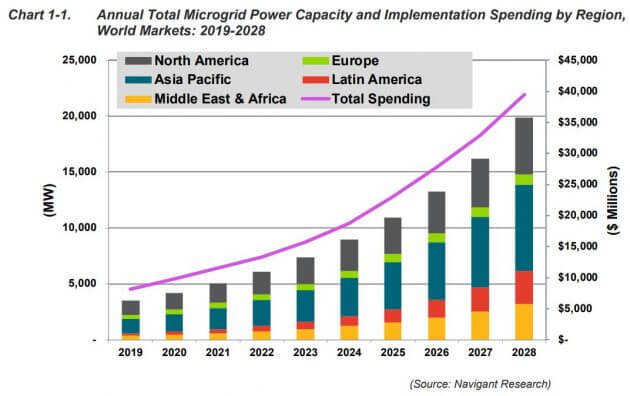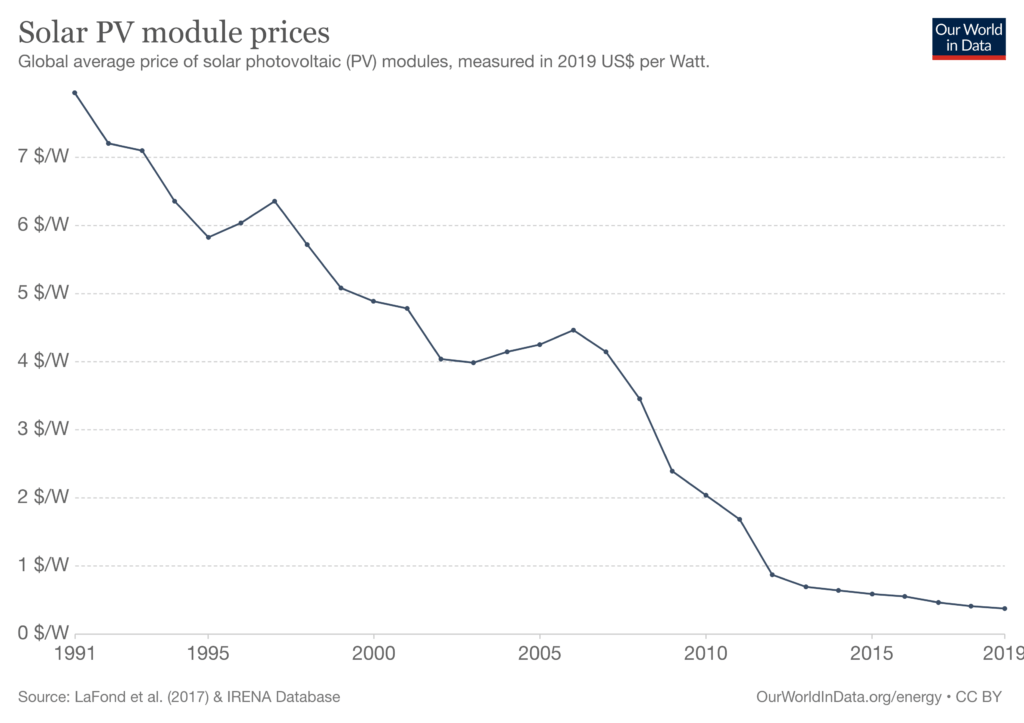What’s The Difference Between Off-grid And Microgrid?
Fair question, and one I had been wondering myself while I sat in the sun at Mr Malcolm’s Marvellous Campsite (pictured above – also, what a name, eh?). The difference between off-grid and microgrid is one thing – connection to the national grid. Fully off-grid estates generate their own power entirely, while microgrid communities are still able to draw from the national grid if necessary.
There are so many benefits to decentralised energy that it almost baffles me that more people aren’t doing it. In a recent article, Hark Sales Director, Joe Hurst talked about how decentralised energy could be the future. I mean, imagine a world where we generate and share energy locally, vastly reducing wasted energy and taking reliability away from fossil fuels. Wouldn’t that be ideal?
Well, clearly I’m not the only one who thinks so; Guidehouse (previously known as Navigant) predicted that the microgrid market will be worth $39.4 billion by 2028.

Generating Your Own Power
There are so many ways of generating renewable energy (and lots of ways being innovated for the near future), but the modern leader of non-national renewable energy generation is solar power, so let’s run with that.
Did you know that collectively the UK has enough solar energy to power 3 million homes? Large estates like colleges and military facilities are ever-increasingly generating their own power to fully seize the benefits of microgrid power consumption.
Generating solar power for your own estate isn’t quite as simple as installing the panels, you also need bidirectional meters (so as not to waste any energy) and private land: public utility infrastructure has to be avoided, otherwise, you’ll have a problem on your hands. The cost of implementing solar panels and the rest of your microgrid rig of course depends on the size of the project, but the good news is that prices for solar installations are coming down.

Sharing Energy With Your Estate
The beauty in microgrid operations is in how they reduce waste by moving excess energy onto the next part of the grid in need of supply. This is where your bidirectional meters come into play, by enabling two-way recognition of energy flow.
So, let’s say your estate has a few local buildings connected into a microgrid; any excess energy you’ve generated can be passed along the estate, ultimately reducing waste.
Energy Storage Batteries
Riddle me this: if your estate is sufficiently powered, but it’s a whopper of a day and you’re still generating a lot of energy, what should happen next? Energy storage. Batteries that store energy are an important part of a fully optimised microgrid and are incredibly useful for countering intermittent energy availability. Said batteries tend to look a little something like this:

(FYI – “Intermittent energy availability” is a fancy way of saying energy generation is reduced when it’s cloudy or the wind stops blowing.)
The above image is an example from the Bright Building. We worked on a microgrid at the Bright Building in Manchester, which utilises the Tesla battery in the picture above.
At times when energy is in abundance, you can send it to your battery and call upon it when the clouds come, or the wind stops.
Selling Power Back to The Grid
Okay, forget about sharing with your neighbours/localised estate and storing in your battery. Let’s say it’s a beautiful day and your entire microgrid is fully powered, including your battery, which is totally juiced up as well. Logically, the next piece of the microgrid puzzle is reselling energy back to the grid, therefore turning bright and sunny days into a new income stream. What a bonus. Your microgrid is fully fuelled, your battery is at full capacity, now you can sell anything extra back to the national grid – how good is that?
While I sat enjoying my barbecue at Mr. Malcolm’s Marvellous Campsite, I appreciated for a moment, the power of microgrids and the great impact they have. Creating a microgrid means that not only is energy waste avoided, but consumption costs are reduced and money gets put back into your pocket.
You can see why microgrids are growing in popularity. The control of your estate’s energy, the positive impact on the environment, the reduction in waste and the potential for a new income stream all tally together to create an energy solution far more efficient than what the national grid offers (sorry, national grid, but that’s the way it is).
Read more about how Hark Systems have implemented IoT into microgrids to improve efficiency and reduce energy cost...



